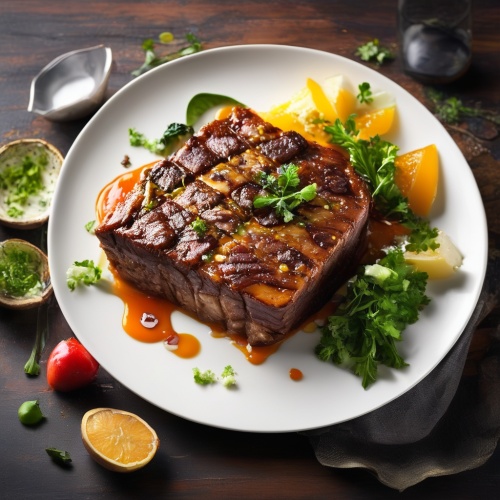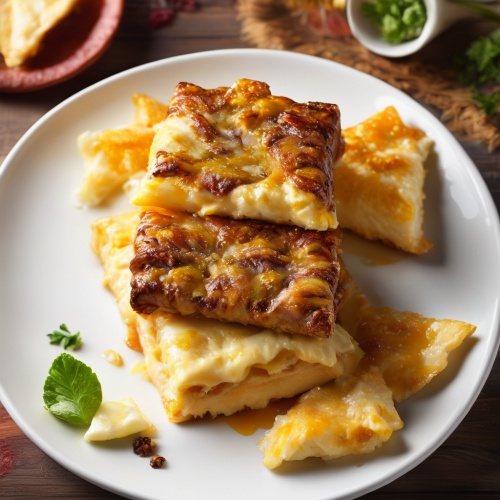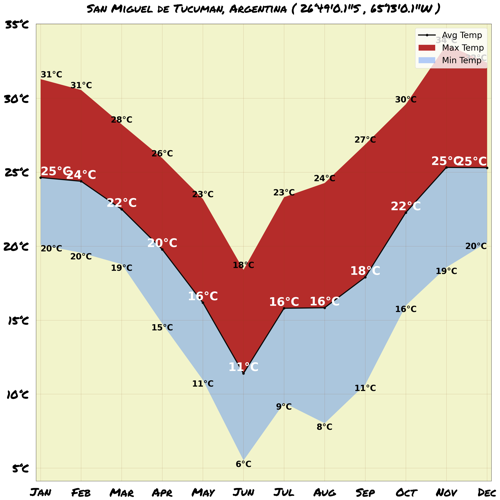Understand
Step back in time and discover the historic significance of San Miguel de Tucuman. This remarkable city holds a place of honor in Argentina's history as it was here that the nation declared its independence from Spain on July 9, 1816. Enveloped in a colonial-style house known as the "Casa Historica" or "Casita de Tucuman," this iconic spot is a pilgrimage site for both locals and visitors alike. Experience the patriotic atmosphere that permeates the city every 9th of July when San Miguel becomes the captivating capital of Argentina. Delve into the rich cultural heritage and relive the historic moments that shaped a nation in this extraordinary destination.
Map & Climate
Popular Foods
 The first most popular food in Argentina is Asado, which is Argentine barbecue. It typically consists of various types of grilled meats, including beef, pork, chicken, and sausages, all slow-cooked over hot coals to achieve a smoky and flavorful taste. The meat is often seasoned with a mixture of herbs called chimichurri, made from parsley, garlic, olive oil, vinegar, and red pepper flakes.
The first most popular food in Argentina is Asado, which is Argentine barbecue. It typically consists of various types of grilled meats, including beef, pork, chicken, and sausages, all slow-cooked over hot coals to achieve a smoky and flavorful taste. The meat is often seasoned with a mixture of herbs called chimichurri, made from parsley, garlic, olive oil, vinegar, and red pepper flakes. The second most popular food in Argentina is Empanada, a stuffed pastry that can be either savory or sweet. The savory version typically includes a filling of ground meat (such as beef, pork, or chicken), olives, hard-boiled eggs, and spices, all enclosed within a thin, doughy exterior. The empanadas can be baked or fried, depending on the region. Sweet empanadas feature fillings like dulce de leche, sugar, or fruits, and are often enjoyed during breakfast or as a dessert.
The second most popular food in Argentina is Empanada, a stuffed pastry that can be either savory or sweet. The savory version typically includes a filling of ground meat (such as beef, pork, or chicken), olives, hard-boiled eggs, and spices, all enclosed within a thin, doughy exterior. The empanadas can be baked or fried, depending on the region. Sweet empanadas feature fillings like dulce de leche, sugar, or fruits, and are often enjoyed during breakfast or as a dessert. The third most popular food in Argentina is Mate, a traditional South American drink made from the dried leaves of the yerba mate plant. It is prepared by filling a gourd (mate) with the dried leaves and twigs, and then pouring hot water over the mixture. The drink is sipped through a metal straw (bombilla) with a filter at the end. Mate can be enjoyed plain or enhanced with additional flavors, such as lemon, mint, or fruit juices. Drinking mate is a social activity, often shared among friends and family members, and is deeply ingrained in Argentine culture.
The third most popular food in Argentina is Mate, a traditional South American drink made from the dried leaves of the yerba mate plant. It is prepared by filling a gourd (mate) with the dried leaves and twigs, and then pouring hot water over the mixture. The drink is sipped through a metal straw (bombilla) with a filter at the end. Mate can be enjoyed plain or enhanced with additional flavors, such as lemon, mint, or fruit juices. Drinking mate is a social activity, often shared among friends and family members, and is deeply ingrained in Argentine culture.




Comments
NO COMMENTS